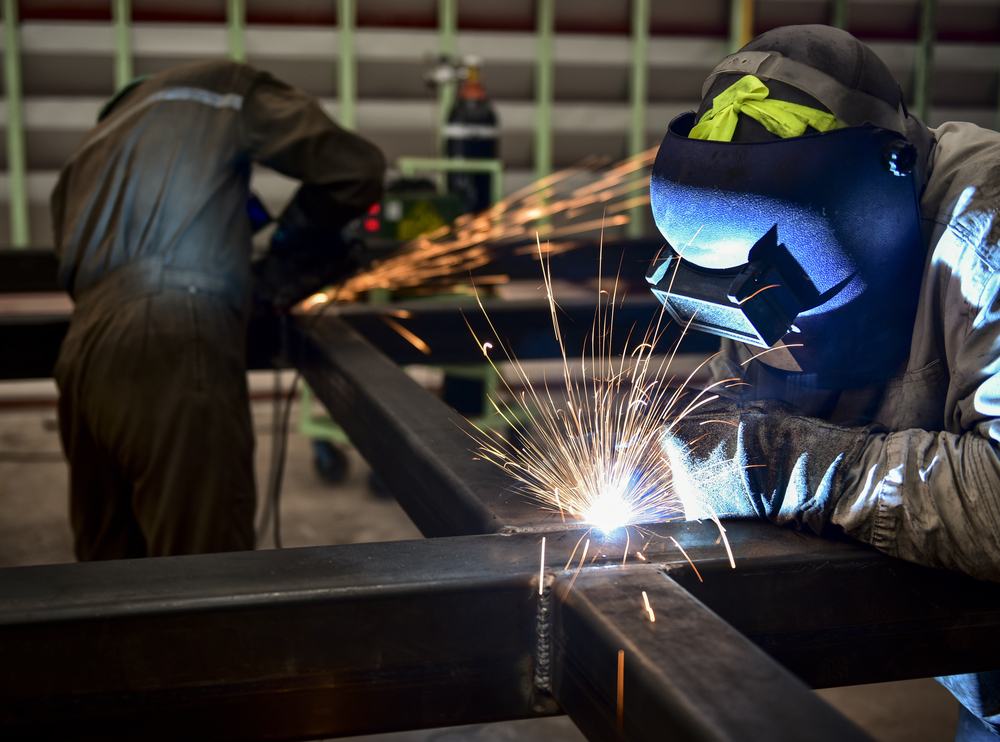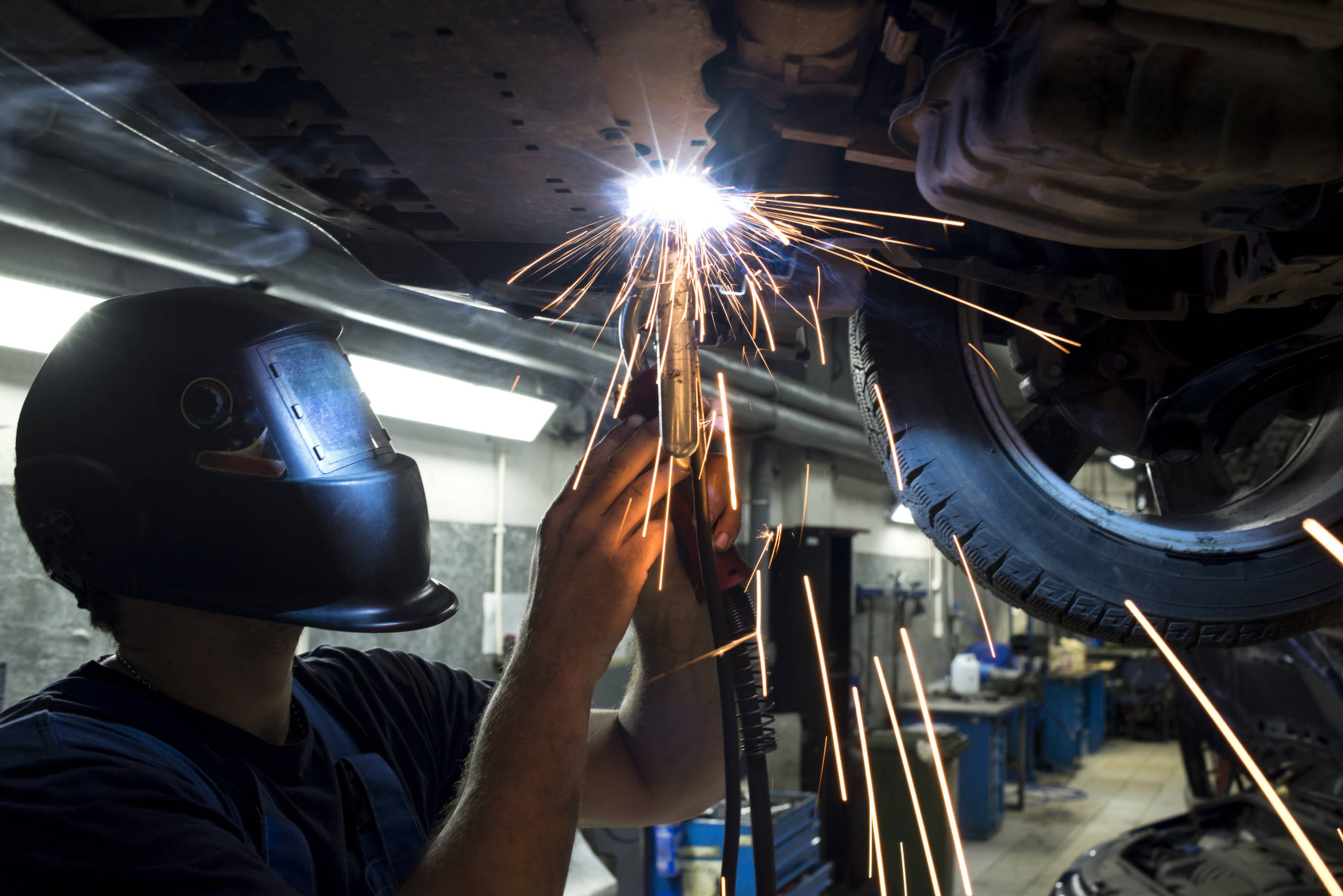Usual Welding Repair Service Issues and Exactly How to Address Them Properly
Welding fixings often encounter a variety of concerns that can jeopardize the honesty of the last product. Usual issues consist of poor penetration, porosity, and misalignment, among others. Each problem presents unique challenges that require certain methods for resolution. Comprehending these issues is necessary for welders intending to improve their skills and results. This conversation will check out these typical welding repair work concerns and efficient approaches to resolve them.
Poor Penetration
Poor infiltration occurs when the weld metal stops working to fully fuse with the base material, leading to weak joints and potential architectural failings. This problem usually comes from not enough warm input, inaccurate electrode angle, or inappropriate welding rate. Welders may run into inadequate infiltration due to a mistake of the needed parameters for a certain product thickness or kind. Additionally, contamination on the base product's surface can impede effective bonding, exacerbating the problem. To attend to insufficient infiltration, welders should ensure ideal setups on their tools and preserve a tidy job surface. Normal inspection of welds is suggested to determine any type of shortages early, permitting prompt modifications and the avoidance of endangered structural integrity in welded assemblies.
Porosity
Porosity is an usual flaw in bonded joints that materializes as little gas bubbles caught within the weld steel. This flaw can compromise the stability of the weld, leading to decreased toughness and possible failing under anxiety. Fabrication. Porosity usually develops from contamination, wetness, or inappropriate welding strategies, which permit gases to run away into the liquified weld pool. To deal with porosity, welders must ensure correct surface preparation, maintain a clean workplace, and use ideal welding parameters. In addition, choosing the ideal filler material and shielding gas can minimize gas entrapment. Routine examination and testing of welds can assist identify porosity early, assuring timely restorative activities are taken, thus maintaining the high quality and integrity of the bonded framework
Misalignment
Imbalance in welding can arise from numerous aspects, including inappropriate setup and thermal development. Recognizing the source is necessary for efficient resolution. Numerous adjustment methods are readily available to straighten components and guarantee architectural integrity.
Causes of Imbalance
Welding misalignment frequently originates from a range of underlying concerns that can compromise architectural integrity. One primary reason is inappropriate fit-up of parts prior to welding, which can cause gaps and uneven surface areas. Variations in thermal development throughout the welding process can likewise result in distortion, particularly if the materials being joined have different coefficients of expansion. In addition, poor clamping and fixturing may fall short to hold elements firmly in place, leading to movement throughout welding. Inadequately kept tools, consisting of welding machines and tools, might present inconsistencies in the weld bead, more adding to imbalance. Driver error, stemming from not enough training or experience, can likewise play a significant function in producing misaligned welds.

Correction Techniques Offered
Dealing with misalignment effectively calls for a combination of rehabilitative methods tailored to the particular problems at hand. One common technique is making use of fixtures or jigs to hold elements in the proper setting during welding, ensuring consistent alignment. Furthermore, preheating the materials can help lower distortion and improve fit-up. For significant imbalance, mechanical adjustment methods, such as making use of hydraulic jacks or clamps, can be employed to fix the placement before welding. Post-weld warmth treatment might likewise be needed to ease anxieties triggered by misalignment. Finally, cautious examination and modification during the configuration phase can prevent misalignment problems from coming to be considerable problems, advertising a smoother welding process and boosting general architectural honesty.
Distortion
Distortion is a common challenge in welding that can occur from various aspects, including irregular cooling and heating. Recognizing the root causes of distortion is vital for executing efficient avoidance methods. Resolving this concern not only boosts architectural integrity however likewise enhances the general high quality of the weld.
Causes of Distortion
When based on the intense warm of welding, products commonly undertake modifications that can cause distortion. This sensation mainly emerges from thermal growth and tightening during the welding procedure. As the weld location warms up, the product expands; upon cooling, it contracts, which can produce internal stresses. In addition, uneven home heating throughout a work surface can worsen these stress and anxieties, resulting in bending or flexing. The kind of material also plays a considerable function; steels with varying thermal conductivity and coefficients of growth may react differently, causing unpredictable distortions. Poor joint style and insufficient her explanation fixturing can add to misalignment throughout welding, boosting the probability of distortion. Understanding these reasons is vital for effective welding repair work and avoidance approaches.
Prevention Techniques
Reliable prevention methods for distortion during welding emphasis on regulating heat input and making sure proper joint design. Keeping a regular warmth input aids to minimize thermal growth and tightening, which can result in distortion. Making use of strategies such as preheating the workpiece can also minimize the temperature gradient, promoting uniform home heating. Additionally, selecting suitable joint styles, such as T-joints or lap joints, can improve stability and minimize stress concentrations. Carrying out proper fixturing to secure the work surfaces in position better aids in preserving alignment during the welding process. Finally, staggered welding sequences can disperse heat more evenly, stopping local distortion. By using these strategies, welders can greatly lower the possibility of distortion and improve the general top quality of their welds.
Fracturing
Splitting is a common problem run into in welding fixings, often resulting from various aspects such as inappropriate cooling rates, material choice, or insufficient joint prep work. The event of splits can greatly compromise the integrity of the weld, leading to prospective failings throughout procedure. To resolve this issue, welders must first assess the source, guaranteeing that materials are suitable and appropriately chosen for the specific application. Additionally, managing the cooling price during the welding process is necessary; fast cooling can induce stress and lead to cracking. Proper joint design and prep work likewise add to reducing the threat. Applying these methods can enhance weld high quality and toughness, ultimately lowering the probability of cracking in completed weldments.

Insufficient Fusion
A substantial problem in welding fixings is incomplete blend, which occurs when the weld metal does not adequately bond with the base product or previous weld passes - Belgrade Fabrication. This defect can bring about weak points in the joint, possibly compromising the integrity of the bonded structure. Factors contributing to insufficient fusion consist of insufficient heat input, inappropriate welding strategy, and contamination of the surfaces being signed up with. To address this issue properly, welders need to assure proper pre-weld cleaning and surface prep work, along with readjust their welding criteria to achieve adequate infiltration and fusion. Normal assessment during the welding procedure can likewise assist recognize insufficient fusion early, enabling timely restorative measures to boost the total quality of the weld
Overheating
While welding fixings can enhance architectural integrity, overheating presents a considerable challenge that can lead to material degradation. Extreme warmth during welding can change the mechanical homes of steels, leading to lowered strength, increased brittleness, and warping. This phenomenon is specifically essential in high-stress applications where architectural integrity is paramount. Recognizing overheating can involve aesthetic assessments for discoloration or distortion, along with monitoring temperature during the welding check procedure. To alleviate the threats connected with overheating, welders ought to utilize proper strategies, such as controlling heat input, readjusting traveling rate, and making use of ideal filler products. Furthermore, implementing pre- and post-weld heat therapies can assist recover material buildings and improve the general high quality of the repair service, making sure long-term performance and safety and security.
Frequently Asked Questions
What Are the Typical Indications of a Welding Issue?

How Can I Evaluate My Welds for Quality?
To check welds for high quality, one can use aesthetic evaluations, ultrasonic testing, and radiographic methods. Each strategy ensures structural honesty, determines flaws, and validates adherence to specified requirements, ultimately improving the reliability of the welded joints.
What Safety Preventative Measures Should I Take While Welding?
When welding, one need to focus on safety and security by putting on proper personal safety equipment, ensuring correct air flow, securing More Info combustible materials away, preserving a clean office, and knowing environments to stop injuries and mishaps.
Can I Repair a Weld Without Redoing the Entire Joint?
Repairing a weld without redoing the whole joint is feasible, depending on the damages (Montana Mobile Welding and Repair Belgrade). Methods such as grinding, including filler product, or making use of a welding procedure can efficiently attend to specific defects while maintaining the bordering framework
What Devices Are Necessary for Reliable Welding Fixes?
Vital devices for reliable welding repair services consist of a welding machine, wire brush, mill, safety gear, clamps, and filler products. Each device plays a vital duty in guaranteeing top quality and security throughout the repair work process. Porosity usually develops from contamination, wetness, or incorrect welding methods, which permit gases to get away right into the molten weld swimming pool. Improperly conserved equipment, consisting of welding devices and tools, might introduce incongruities in the weld bead, further contributing to misalignment. When subjected to the extreme heat of welding, materials usually undertake adjustments that can lead to distortion. Cracking is an usual issue experienced in welding repair services, often resulting from various aspects such as incorrect cooling rates, product option, or poor joint prep work. A substantial issue in welding repairs is incomplete combination, which happens when the weld metal does not sufficiently bond with the base product or previous weld passes.